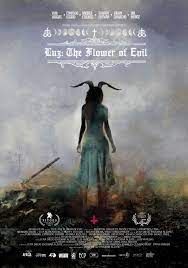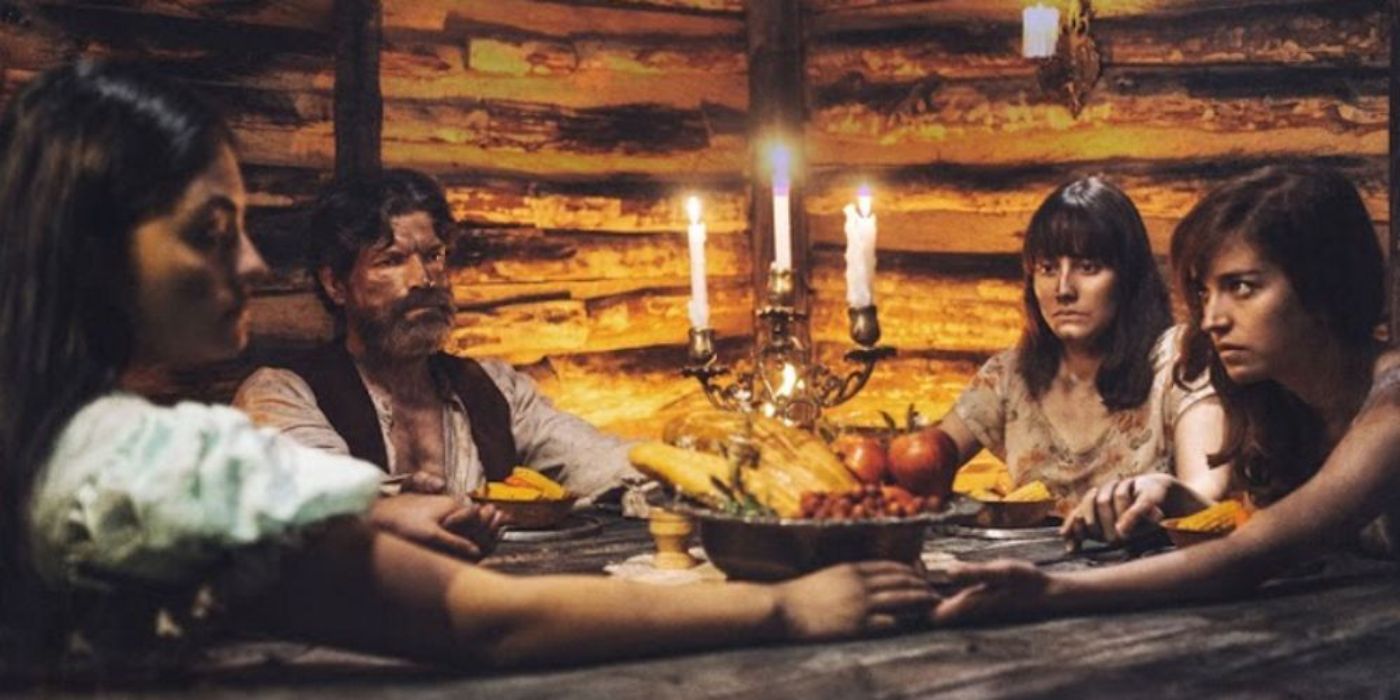The Twisted Horror Western That’s Really Hard To Watch
Trigger Warning: The following references sexual assault.
The Big Picture
- Luz: The Flower of Evil is a genre-bending horror Western that blends beauty and ugliness, light and dark motifs to create a terrifying and visually stunning experience.
- The film explores the relationship between good and evil, showcasing how moral actions are inseparable from evil and that suffering is bound to goodness.
- Luz: The Flower of Evil is a challenging and cryptic movie to watch, breaking from traditional storytelling devices and using symbolism to delve into philosophical themes of humanity and suffering. It is a haunting and must-see film for fans of neo-Western, horror, and fantasy genres.
Writer/Director Juan Diego Escobar Alzate creates nightmare fuel with his 2019 genre-bending horror Western Luz: The Flower of Evil. This beautifully shot, surreal tale of isolation and madness is a refreshingly original blending of story and form, that makes this film work so well. Alzate creates a gorgeous and terrifying film that is impossible to watch. The decadent color palates and emotionally urgent cinematography generate a world that’s both terrifying and beautiful and a bittersweet pleasure for audiences.
Alzate opens his film with the pastoral sounds of a South American paradise. The opening frames of the film are hazy, grainy, and colorful. Beautiful women wearing rustic gowns ride white horses against a pastel sunrise. Birds chirp in lush forests of vibrant green and yellow hues next to iridescent blue waterfalls melting into whorls the color of liquid pearls. Alzate builds his world frame by frame, drowning the audience in luxurious beauty. But as the horror Western begins to open, the splendor of their home is punctured by quick cuts of desiccated animal corpses, rotting corn, an empty iron chain, and the blood-soaked sheets of a dilapidated shack. Something rots inside paradise. This juxtaposition of beauty and ugliness, of light and dark motifs, is a significant theme of the film. By positioning this story of madness and death among such incredible beauty, Alzate entices audiences to endure the tale of death and madness to follow.

Luz: The Flower of Evil
In the thickness of the mountains, in an isolated community led by a preacher known as El Señor, a presumed new Messiah is brought unleashing a wave of violence and pain.
- Release Date
- October 7, 2019
- Runtime
- 104m
- Genres
- Fantasy, Horror, Western
‘Luz: The Flower of Evil’ Explores the Relationship Between Good and Evil
El Señor (Conrado Osorio) is the patriarch of a small cult-like farming community suffering in the wake of the death of their matriarch, Luz. Her body lay buried beneath a tree that would not bloom, and it had shaken the faith of the community. El Señor’s righteousness and aversion to the world unfolds simply at first. His daughter Laila (Andrea Esquivel) finds a cassette player in the woods with a recording containing a Mozart recording. He sits stoically, cruel eyes fixed on her, raking his gaze over her body in uncomfortable silence. His very presence feels like a violation. In low, grave tones, he tells her that the devil disguises himself as something beautiful and that the devil’s voice is on this tape. He tells her his voice is called music before clawing the recorder away with a filthy hand. El Señor’s subversion of his daughters’ individuality is born out of a desire to protect her purity. In this scene, two critical points arise. The first is that the ends justify the means. Deny the girl’s music, so she will stay safe. The second is that El Señor believes that suitable actions can appear evil and evil actions can appear good. The beautiful recording on the tape is filled with ugly sin, and El Señor’s dark nature is beautiful and light.
What makes this so terrifying is the length at which El Señor goes to maintain control over the group. Dissension emerges among the cult supplicants, notably in a scene between Adán (Jim Muñoz) and Elias (Daniel Páez). From a hidden vantage point, the dirty, filthy pair watch El Señor’s daughters, Uma (Yuri Vargas), Zion (Sharon Guzmán), Laila, and Angela (Marcela Robledo), bathe beneath a waterfall. Elias tells them that the women are angels of god, perfect and pure, but Adán believes otherwise. He never takes his eyes off them, mouth agape with bestial lust. Later, as the two search for Laila, he ravishes Uma against a tree and, finding her blood on his hand, proclaims that angels did not bleed and strikes her. El Señor sees her wounds and knows that his control over the cult has nearly totally eroded. To reestablish his control, El Señor kidnaps a boy named Jesús (Johan Comacho) and, when his mother comes to rescue him, rapes her while Laila watches.
It is painful to witness. The scene itself is uncomfortably long, subjecting audiences to sheer unadulterated evil. Alzate turns the camera towards the eyes of the victim, the terror on Laila’s face as she witnesses the contortions of her father’s twisted visage, indulging in his sin. His morality was marred by evil deeds, twisting his piety into something sinister. The end, of course, justifies the means. El Señor banishes the woman, chains the child by the neck, and proclaims him God. He has delivered on his promise to bring them the Messiah. However, this is not the first time he has kidnapped a child, and as El Señor discloses that the last child was a mistake and was, in actuality, the devil, audiences are horrified to learn that they murdered a child.
In ‘Luz: The Flower of Evil,’ Good and Evil Are Inseparable
Alzate will repeatedly revisit this theme of good and evil, of light and dark, throughout the film. He situates the good as inseparable from the bad. Human beings, he posits, possess a duality. Moral actions do not occur without evil; they occur because of it. So El Señor can commit these evil acts, believing his actions mirror the universe’s natural order. Consider a man who thinks that he can chain God up by the neck. El Señor and his daughters revere the boy and take care of him, but he remains their prisoner. They feed him and clothe him as a way of courting his favor, but only that prosperity can be restored. And while God may be present among them, a wave of death and despair follows—the good is eternally bound to suffering and evil.
As a result of her forbidden sexual liaison with Adán, Uma becomes pregnant. Indeed, it would seem that God has delivered on his promise to bring them a child Messiah. The pregnancy makes her feverishly ill, and El Señor tries to comfort her. However, in a terrifying scene, El Señor cuts the infant from a mortally sick Uma’s belly, brandishing the stillborn child like a rattle, screaming that it was spawned by the devil because “the baby could not fit in there.” El Señor, covered in blood and amniotic fluid, falls genuflect before Jesus and asks him why he brought destruction to them. God does not only create; he destroys. Good is bound to evil in an eternal recurrence. El Señor believes this boy is God, blaming God for everything, but Jesús looks at him blankly. God is not to blame. The evil that has befallen them directly results from their desire to pursue the good. By attempting to save Uma, he had defiled a newborn. By trying to bring the community a savior, he attacked a woman, destroying her sanctity and violating his principles that women are angels. El Señor is the architect of his misery; he only needs to look around the beautiful world around him to see God at work, but instead, he mires in the filth of sin, looking for salvation. Heaven and Hell are places humans create by their actions.
‘Luz: The Flower of Evil’ Is a Difficult Movie To Watch
Luz: The Flower of Evil is challenging to follow or watch—Alzate breaks from traditional storytelling devices to deliver a more symbolic and cryptic horror tale. El Señor tells Laila that the devil sometimes hides in poetry, which is poetic and self-indulgently ironic. The film breaks from the narrative, extensively using voice-overs where Laila narrates her inner monologue over beautiful shots of starry vistas and giant luminescent moons or clothes hanging on a line blowing in the wind. There is no immediate connection between the voice-overs, these insert shots, and the characters’ story arcs. It is an art-house motif used to explore the film’s philosophical themes rather than to convey a linear story. There is so much that is never revealed to audiences as they are led through this terrifying visual feast. Alzate never discloses what year it was, how they got there, where the rest of the world is, or even the exact circumstances of how Luz died. None of this is particularly relevant, though, because the entire film is more or less a visual essay on the nature of humanity. It is about how human beings endure and make sense of suffering. The twisting, confusing, and ethereal nature of this film produces in its viewer an unsettling sense of ambiguity that mimics the moral and philosophical struggles of the characters in the film, and that is entirely the point.
This is a haunting film for reasons of its abject beauty and most certainly for the horrific violence and psychological terror that lives in Alzate’s Garden of Eden. The dreamy nature of the film crawls under the skin. Its symbolism and its break from traditional Western and horror norms of dusty and dark places instead seduce audiences with lush, decadent vistas. He simultaneously subjects audiences to a spiritual examination of the evil that humans do. This journey into the dark heart of the soul is genuinely terrifying on a deep and existential level. On the one hand, the natural beauty of the world the director has built is beautiful and inviting, but on the other hand, inextricably bound to its beauty is the horror endured by those who inhabit it. Rarely do directors merge such genres and themes with novelty, elegance, and beauty, but Alzate can do this while also making the blood freeze in the veins. He has created something original, disturbing, and must-see for neo-Western, horror, and fantasy film fans.
Luz: The Flower of Evil is available to stream in Tubi in the U.S.
Watch on Tubi
#Twisted #Horror #Western #Hard #Watch

